The world went online, especially after the pandemic hit. From business meetings to catching up with friends, even activities we thought needed to be done in person found a new home in the virtual world. Sales was no exception to this.
Soon the 21st century came to be defined as the ‘digital age’ where social media became the benchmark in the lives of people of all ages, no matter how little they know about the online world. Social media platforms also extended its invitation for the direct selling communities across the globe to participate as ‘one among the users’, meet potential customers, and make the best out of this evolving technology.
So, we started looking into how direct selling companies are navigating social media these days—interested in learning about their efforts to adapt, leverage, and optimize these digital platforms for effective customer outreach and online engagement.
Epixel has been standing strong beside direct selling industries globally for more than a decade now. Motivated by a commitment to excellence and a deep understanding of the evolving landscape, we meticulously analyzed social media trends and their influence on the industry. Through thorough analysis and interpretation of data, today we have come up with some valuable insights that can give direct selling companies a real advantage in the long run.
Research methodology
Research approach: The research involves manual examination of social media posts of direct selling companies across various platforms by using mixed-methods approach.
Data collection: We selected 15 out of the top 100 direct selling brands and analyzed their social media activities for over a period of three months.
Sampling technique: The top 15 direct selling companies were selected based on their market influence, revenue, and industry prominence.
Data analysis: Quantitative analysis of content types, content themes, and posting frequencies. Qualitative analysis focused on product-promotion strategies, community engagement methods, and CSR initiatives specific to each social media platform.
Data sources: Social media posts were collected directly from the official accounts of the selected direct selling companies across various platforms including Facebook, Instagram, X, and LinkedIn.
Conclusion: This study aims to uncover industry trends, identify common practices, and evaluate the effectiveness of these social media strategies within the direct selling industry. The findings will help direct selling companies optimize their social media presence, enhance engagement, and stay one step ahead of the competition.
Research highlights
This article reveals interesting details about how the top 15 direct selling brands use social media. It shows:
- The wide variety of content they share, from product demonstrations to customer success stories.
- The impact of social media posting and sponsored content on brand visibility.
- The importance of monitoring and responding to social media trends to stay relevant and maintain a competitive edge in the market.
- The alignment of social media strategies with larger marketing objectives and business goals.
Most used MLM social media content types by direct selling brands
Social media filled all the micro-moments in our daily lives—from the first information we consume after waking up to the last information we go through just before sleeping. But one question stood out: How direct selling companies want this information or content to be structured across social media platforms?
We started out from here.
Categorizing MLM social media content types
Direct selling companies distributed their content across various social media platforms using four primary formats. These formats include:
- Images - Visual storytelling
- Short videos - Bite-sized (under 1 minute) entertainment
- Long videos - In-depth (over 1 minute) exploration
- Carousels – Sequential journey
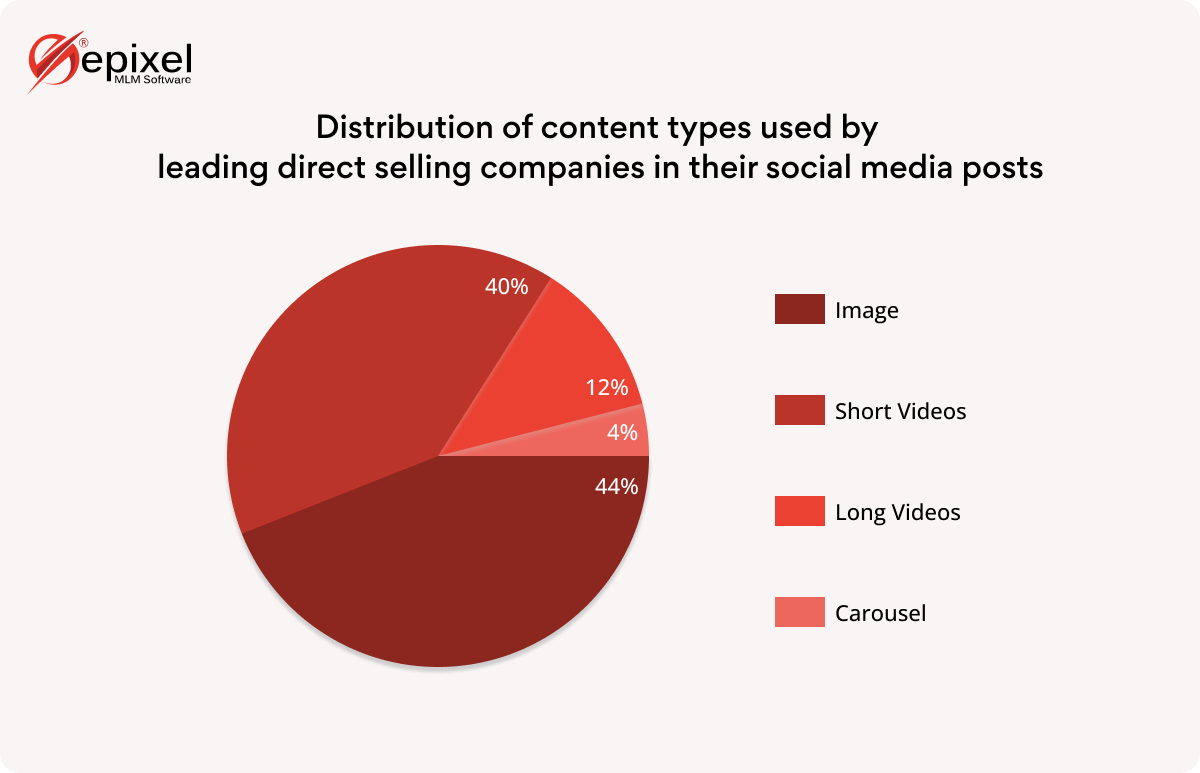
Insights gathered:
Direct selling companies mostly prefer using images in 44% of their social media posts, closely followed by short videos at 40%.
Long videos (4%) are used less often, while carousels (12%) are occasionally used for variety.
This shows how businesses create posts that appeal to users’ visual sense and attention span to keep them interested, engaged, and coming back.
Most used MLM social media content themes by direct selling brands
There are high-level buckets of topics, and not all resonates with every audience equally. So, the next step was to analyze the performance of each content theme across social media channels.
Categorizing MLM social media content themes
After a tried-and-true research, experimentation, and data analysis, we were able to come up with the best performing content themes equipped by direct selling companies and segmented their social media posts into five categories:
- Focus on product - Details on the products, its features, usage, and benefits.
- Focus on education - Informs users on industry trends or relevant topics that align with their interests to learn more or something new.
- Focus on brand - Showcases company's values, culture, and mission.
- Focus on community engagement – Utilizes like, share or comment features with challenges, quick quizzes, guessing games, or sharing success stories.
- Focus on social responsibility – Talks more about company’s commitment to social good or environmental responsibility.
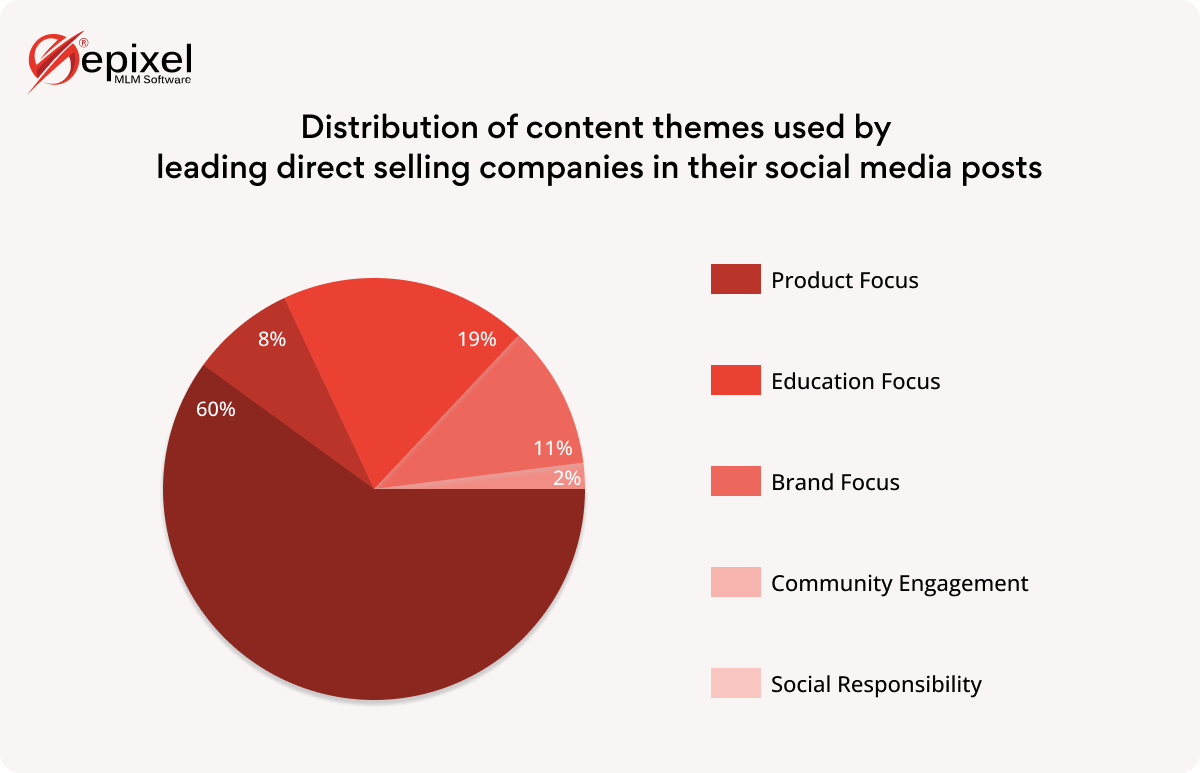
Insights gathered:
Direct selling companies give importance to product-related content in 60% of their social media posts, which underscores a drive to boost sales and highlight offerings, whereas 19% brand-centric posts work well to establish trust and enhance customer loyalty.
11% of posts related to community participation reflect the brand's commitment to placing customers at the centre, making them realize that they are an important part of the company, and their words hold weight.
By leveraging educational content (8%) companies turn into an authoritative source in the industry.
The remaining 2% social responsibility posts focus more on making a positive impact on society or the environment that appeals to users across all generations, from millennials to Gen Z.
Social media posting frequency of direct selling brands
So, we came across this HubSpot study about how often to post on Facebook pages with over 10,000 followers. Turns out, they found that the more often you post, the more clicks each post gets. It was a key insight that really shaped our research.
MLM social media platforms
There are a multitude of social media platforms out there, but we decided to narrow our focus to study four specific ones that have grown in significance over the years:
- Facebook - Extensive reach for targeted engagement through posts, ads, and live streams.
- Instagram - Leveraging stories and influencers to showcase products and lifestyle.
- X – (formerly Twitter) - Real-time communication channel for sharing updates and discussion on trending topics.
- LinkedIn – Professional platform for posts that convey thought leadership, reach out to connections, and offer opportunities for career advancement.

Insights gathered:
Direct selling companies really put their efforts into engaging with their audience on Instagram, which stands top with 5.8 weekly posting frequency, followed by Facebook at 5.6.
X sees significantly fewer posts, around 1.9 weekly posting frequency, from these brands, probably because its focus on quick updates and character limitations may not align well with their marketing goals.
LinkedIn falls in the middle with an average weekly posting rate of 2.5; although it's valued for professional networking and brand promotion, it may not receive as much attention when compared to the more visually oriented platforms.
Social media platforms keep on updating their algorithms, rolling out new features, and tweaking engagement rules constantly. What worked last year might not work now, and what's popular today might not be in the near future.
With these changes happening day in and day out, we tried to look out the strategies that direct selling brands come up with to cement their presence in these platforms.
MLM social media strategies for product promotion
Direct selling brands focus more on how their products can be explored, shared, and celebrated by the users. This focus got us digging into how these brands promote their products on social media platforms, and we ended up breaking down their strategies into the following segments:
1. Product display
Each image or video serves as a digital shop window. The engaging visuals and descriptions evoke users’ interest to deep dive into the featured products. This MLM social media strategy involves the posts that highlights:
- Product benefits and its features
- Use cases and demos
- Ingredients and quality
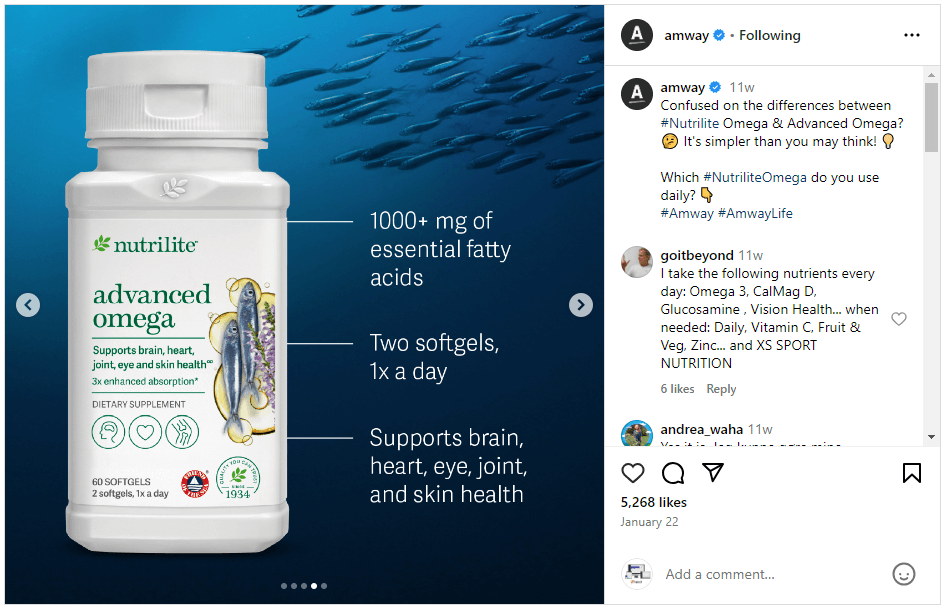
Key takeaway: Here, the brand is creating an immersive experience by showcasing their product in the best light possible. In a crowded marketplace, such a standout display can be the key to attracting attention, driving sales, and leaving a lasting impression.
2. Offers/coupons
Direct selling companies love to throw around discounts like 20%, 50%, 55%, and more along with a load of coupons to increase customer acquisition and retention. It's their way of saying, "Hey, we appreciate you!"
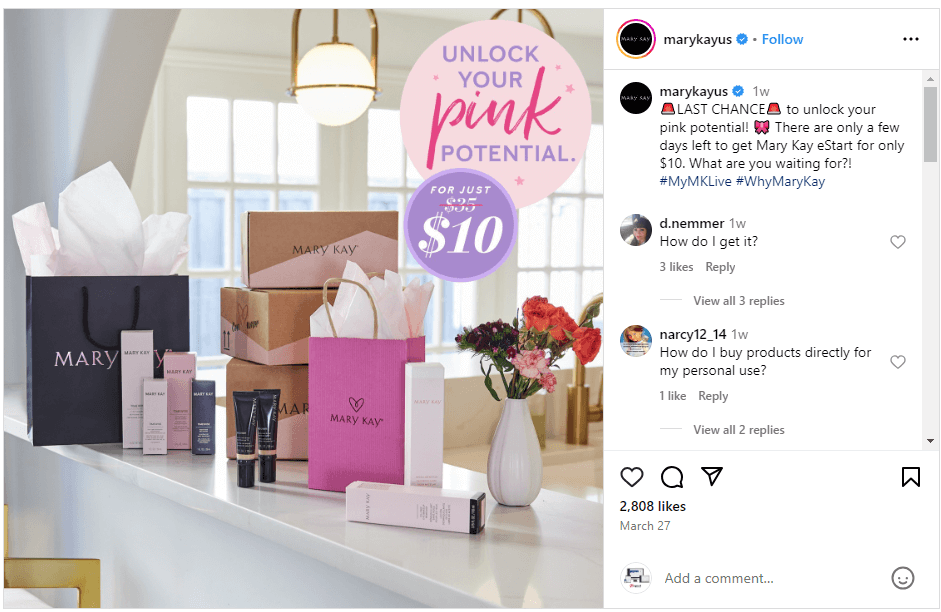
Key takeaway: These offers and coupons are the incentives that encourage customers to buy more and stay loyal to the brand in the long run.
3. Influencer collaboration
Influencers are those who can effortlessly create a bridge for the brand to connect with the right prospects at the right moment. They have the ability to humanize the brand and make it resonate with customers like never before.
Influencer Marketing Benchmark Report 2025 reveals that influencer marketing is considered as a promising strategy by 80% of marketers.
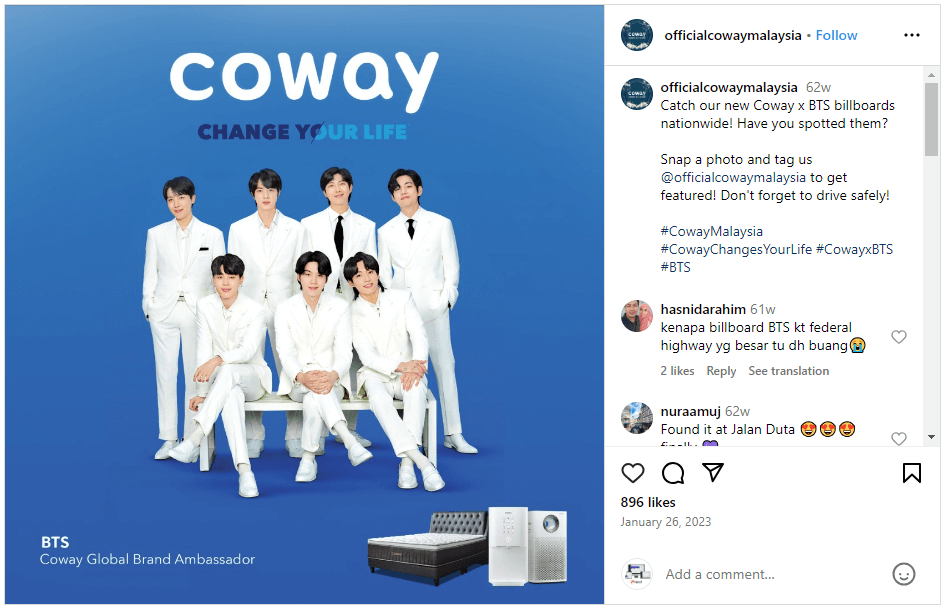
Key takeaway: Today, direct selling companies are all about utilizing effective social selling strategies—it's like their go-to move for getting their products out there. To make this happen, they team up with these influencers who open doors to new markets and creates excitement around their offerings.
4. Sponsoring events
By financially supporting or collaborating with events, direct selling brands gain valuable opportunities to showcase their products or services directly to a targeted audience. They often choose to sponsor events that align with their brand values, target market, and product offerings. Let's walk through this example:
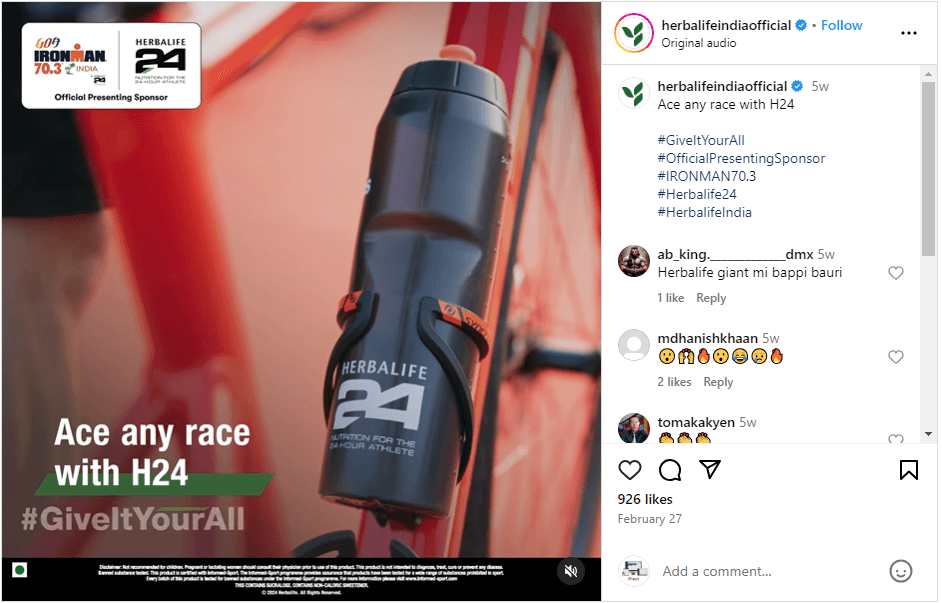
Key takeaway: Check out this social media post featuring Herbalife24's support for the IRONMAN 70.3 cycling event! As participants pedal through the route, Herbalife24 sets up hydration stations where they distribute their energy drink to boost performance. As cyclists refuel with Herbalife24's product, the health and wellness brand reinforce their focus on helping people achieve their fitness goals.
5. Interactive product challenges
Product challenges can be widely seen in social media feeds of many leading network marketing companies. Such MLM social media posts carry the language that finely expresses the product’s benefits and features. It also has the ability to achieve their health and wellness goals in a fun and interactive manner.
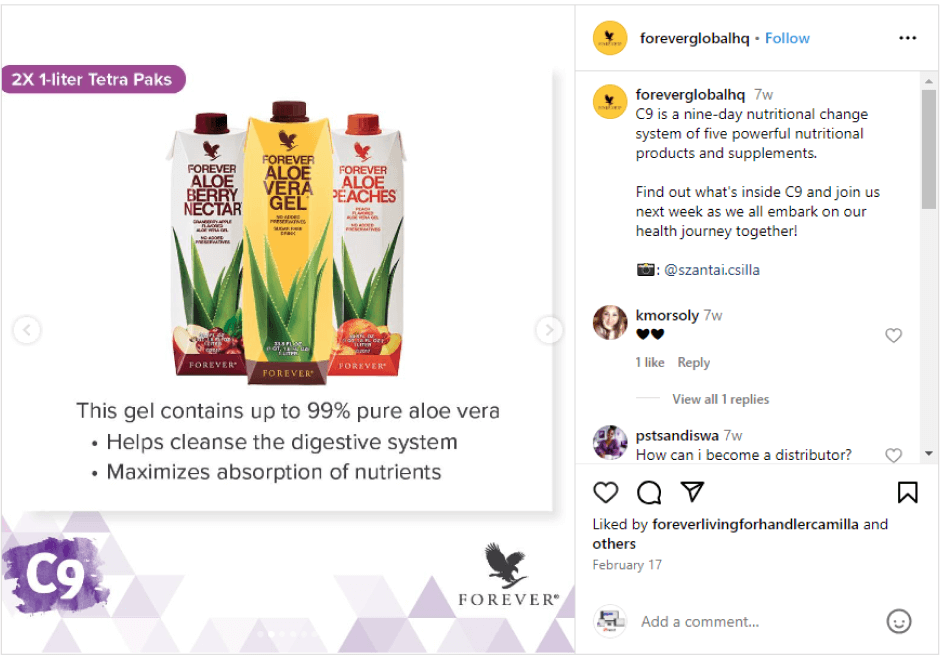
Key takeaway: C9 uses a smart strategy here. "Reset your body and your mind with C9!" outlines about the product, how to use it, and the benefits attached. Now, this post challenges the users to embark on a journey of wellness and self-improvement by making the C9 products a part of their daily routine. Smart, right?
6. Limited edition products
Direct selling brands often employ limited edition products as a savvy promotional strategy. By offering exclusive items for a limited time, they create a sense of URGENCY!!! that motivates customers to act quickly.
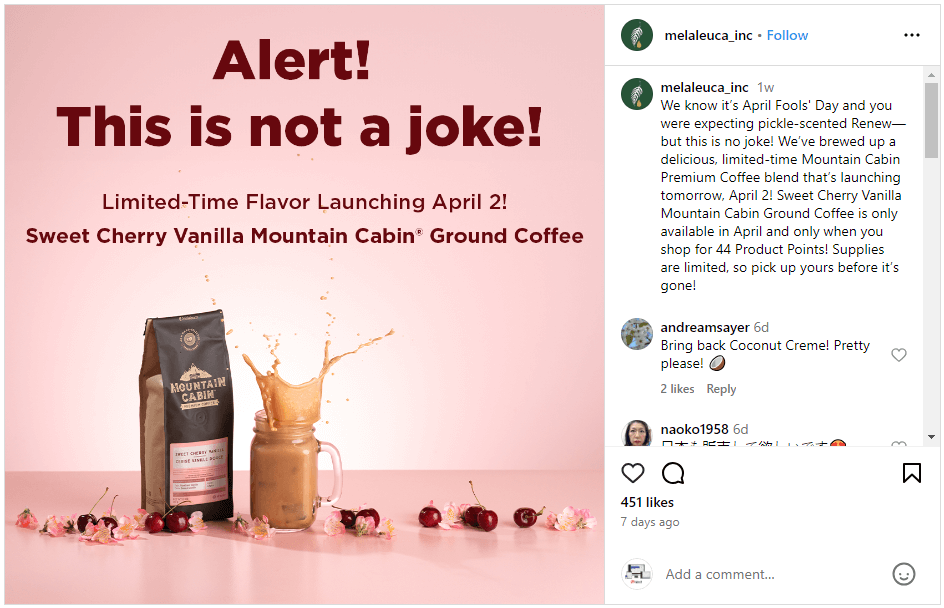
Key takeaway: These promotions make customers feel valued, as they have the opportunity to access something unique and special.
7. Product giveaways
A product giveaway is a promotional strategy used by direct selling brands to distribute their products for free to their customers. A product giveaway post typically includes elements such as:
- Eye-catching visuals: High-quality images or videos.
- Clear instructions (usually in comment section): Outline on how to enter the giveaway.
- Duration: Start and end dates to create sense of urgency.
- Prize details: What prize or prizes are being offered that shows the value participants stand to gain.
- Rules and eligibility: Age restrictions or geographic limitations to ensure transparency and fairness.
- Call-to-action (CTA): Prompts followers to enter the giveaway.
Let’s follow this with an example,
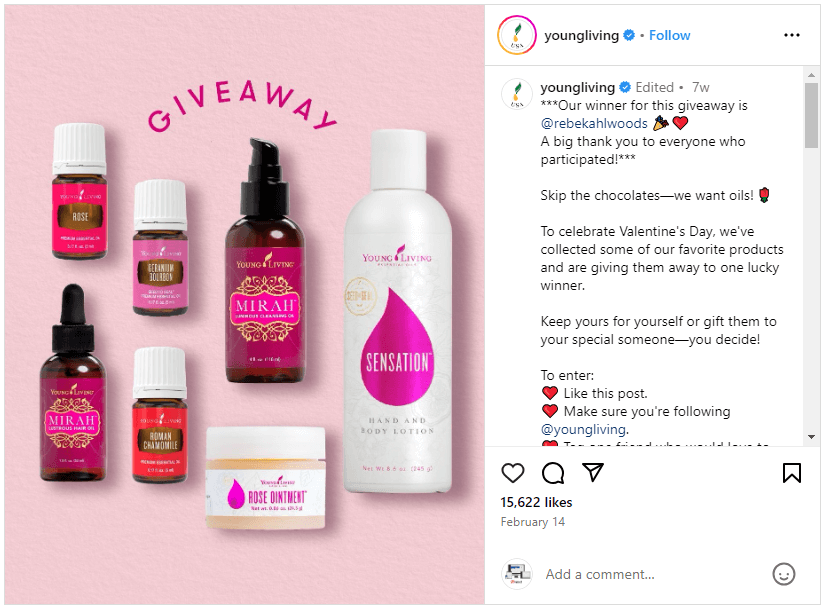
Key takeaway: This product giveaway post has a design that is visually appealing, easy to understand, and compelling enough to drive engagement and participation from the audience. So, it serves the purpose of an ideal product giveaway—generating buzz, increasing brand visibility, attracting new customers, and rewarding existing ones.
8. Pre-launch promo
We looked at three companies in our study, and the accumulated data confirms a trend: They used pre-launch promo posts and videos for their new products by leveraging platforms like Facebook.

Key takeaway: Just like a trailer before the movie, a teaser like this that announces the brand's upcoming product with sneak peeks and exclusive content creates an atmosphere of eager anticipation. This keeps their audience on the edge of their seats who eagerly await the grand reveal.
Holiday MLM social media strategies
During our study, we found that direct selling brands’ social feeds have a special place for holiday seasons. They get all cozy, throwing out heartwarming campaigns that evoke nostalgia and offers that just spread pure joy. It's like they're saying, "Hey, let's celebrate together!"
These direct selling brands really know how to turn holidays into unforgettable moments online.
1. Product-themed wish
Our research took an interesting turn when we found out how direct selling brands took inspiration from upcoming or ongoing occasions to shape their product designs. Once the product designs were locked in, direct selling brands posted them on social media with visuals that again captured the essence of the season.
Let's take a peek at a post for Valentine's Day adorned with red color palette and heart shape.
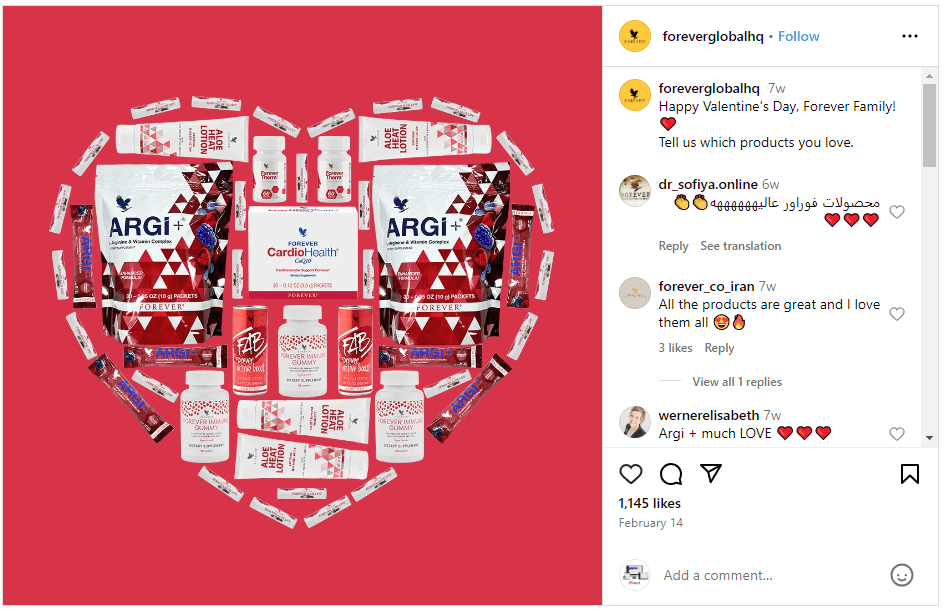
Key takeaway: The product-themed wishes require a perfect blend of creativity, strategy, and festive spirit. This involves posts that focus on promoting gift ideas and holiday bundles. Such sentimental approaches last well beyond checkout, setting brands apart and turning browsers into loyal customers.
2. Brand focused wish
By extending warm wishes and spreading joy through social media feeds, brands show their appreciation for their customers while strengthening their brand image.

Key takeaway: Sending holiday greetings and well wishes like this would go beyond marketing—they convey sincerity and goodwill to make the best of this holiday season.
3. Holiday themed product promotion
Christmas, New Year, Valentine’s Day and countless others worthy of celebration—as the calendar fills up with these moments of joy across the globe, direct selling brands are quick to embrace the spirit of each occasion with open arms. They leverage festive themes to offer discounts and special promotions as part of their strategy.

Key takeaway: These brands tap into the excitement evoked by that particular season to engage and connect with their customers in meaningful ways. Holiday-themed product posts are more than just promotions—they're invitations to spread happiness and make memories that last a lifetime.
MLM social media strategies for community engagement
At its core, direct selling is all about building and nurturing human relationships. Brands in this industry make sure everyone feels included and supported. This unity strengthens brand loyalty and also enriches the overall experience of everyone involved.
We went the extra mile to find out how social networks help brands to establish a digital home and cultivate a community of customers using the following strategic approaches:
1. Interactive contest
Contest encourages customers to embrace their competitive side. By organizing fun activities like contests or polls, direct selling brands encourage active participation from their audience.
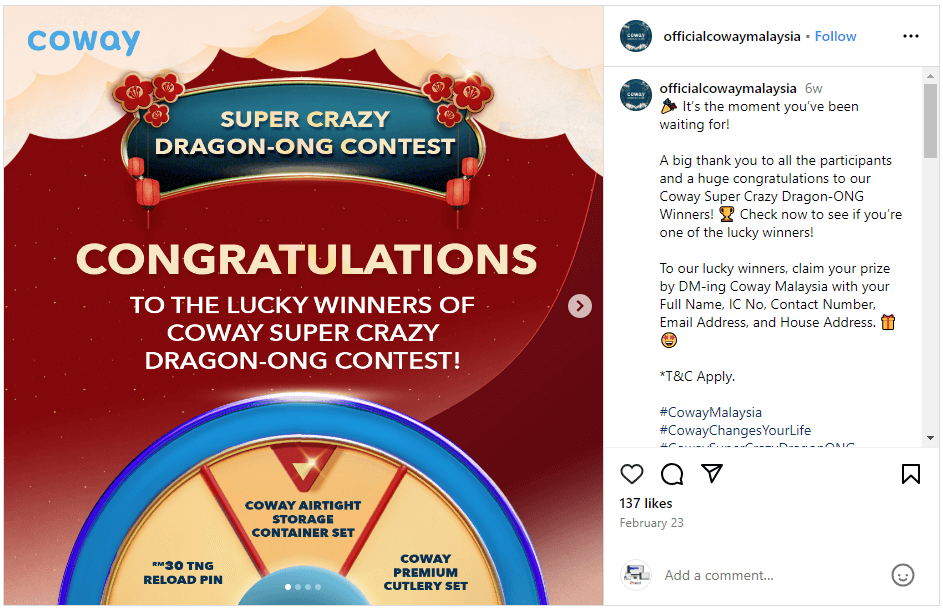
Key takeaway: In their social media posts and comments, we can see how Coway Malaysia provides clear instructions on “what to do” and “how to participate in the contest”. This makes it easier for customers to join in and also make way for enhanced customer engagement.
2. Q&A based posts
Giving all ears to customers’ side of the story is the main purpose of question-answer posts. Brands create a platform for meaningful dialogue and engagement where users share their thoughts, opinions, and answers.
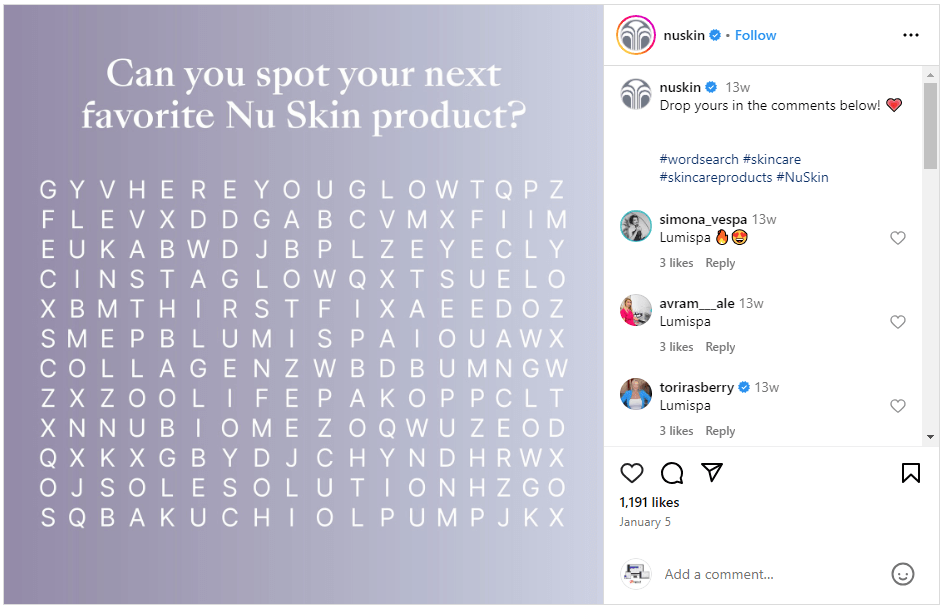
Key takeaway: Such posts encourage answers, thereby showing that brands value and listen to their customers' input. This also allows brands to gain valuable insights into their customers’ needs and preferences.
3. Product giveaways
Product giveaways on social media platforms are a smart way used by direct selling brands to boost community engagement.
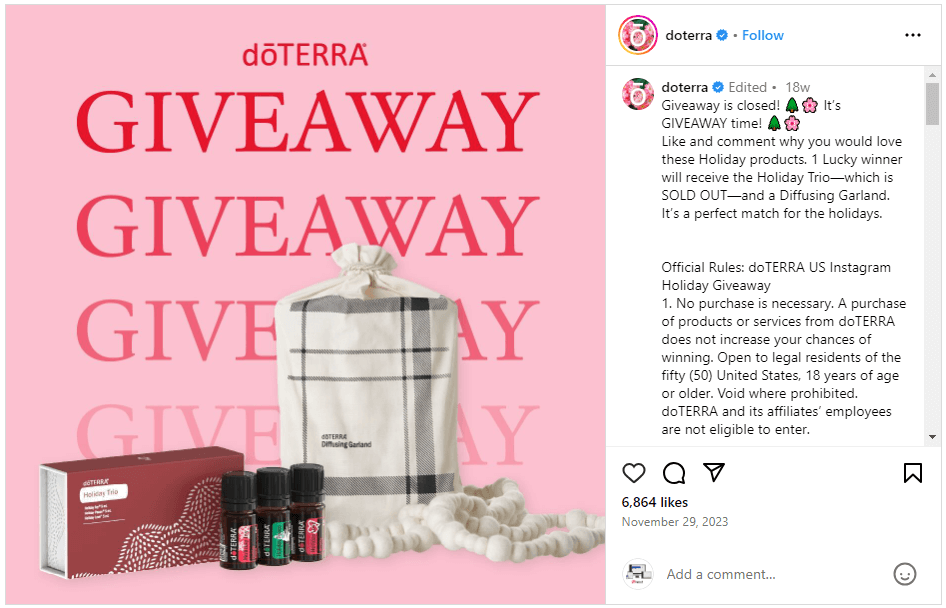
Key takeaway: This social media post contains the product up for grabs, details the number of products winners get to bag, and provide instructions on how to participate in the event. As the comment section gets flooded, brands understand that their strategy has hit the mark.
4. Events and conferences
From announcing upcoming events to live-posting highlights, brands keep their distributors engaged. They share all the thrills and spills on social media platforms.
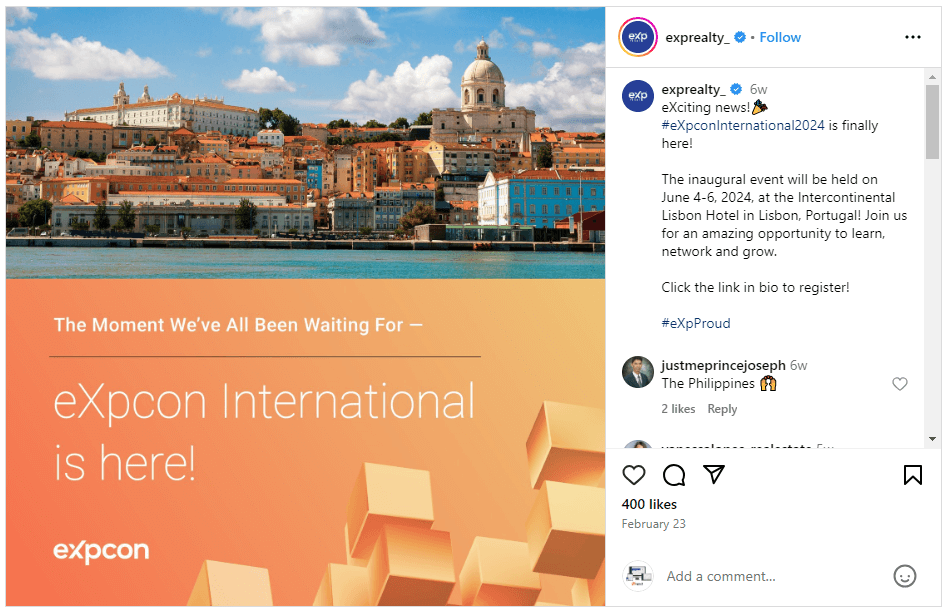
Key takeaway: Whether it’s a sneak peek of the venue or a shout-out to guest speakers, these posts make distributors feel like they are right there in the action and participate actively throughout the event.
CSR activities of leading direct sales brands
In today's digital world, businesses have changed how they operate. They're not faceless anymore—society wants them to be more involved and help others. With a plethora of information around, customers are well aware of their individual role and collective responsibility when it comes to society and the environment.
With this in mind, we dug deeper to find out how direct selling businesses strive to accomplish their goals for the people and the communities they operate in. We started by analyzing their posts related to corporate social responsibility (CSR).
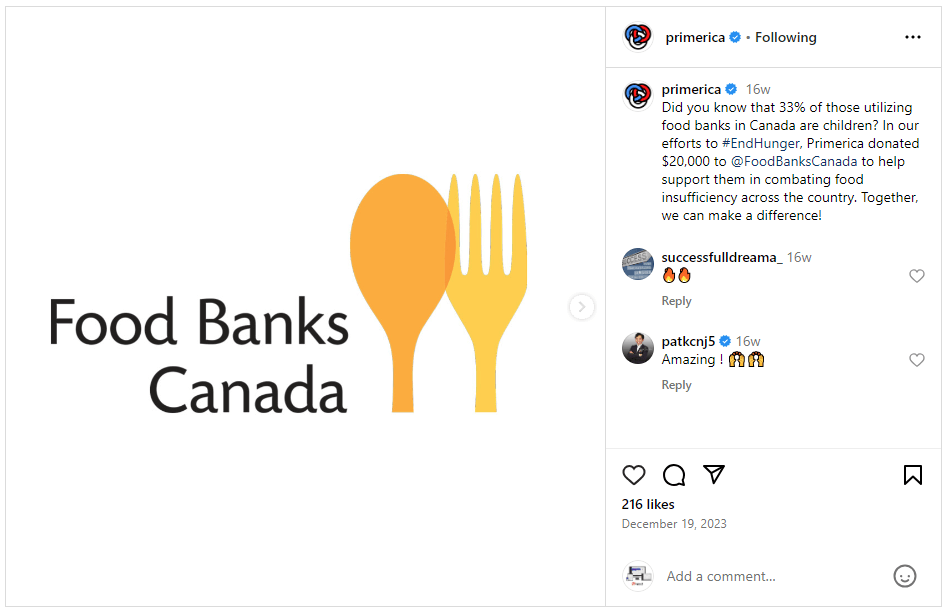
Key takeaway: These posts carry the promising signature of a brands’ CSR initiatives—they're a big factor in helping customers decide which businesses to support. In fact, many customers are even willing to pay extra for products and services from brands that give back.
Sustainability front and center in social media posts
A brands’ environmental footprint shapes customers’ eco-conscious choices. A recent social media post by Amway grabbed our attention:

Key takeaway: This sustainability initiative reflects their commitment to energy efficiency across their manufacturing sites worldwide. Dedication, responsibility, and stewardship all in one post.
Stay updated
In this era where social media takes the spotlight, each post by these direct selling brands holds the promise of possibility, and every interaction with their customers turns into a step closer to successful sales.
Discover how we build resilient businesses with advanced MLM functionalities
Now that our research comes to a close, it's evident that there's still much more to explore as we continue to navigate the ever-evolving role of social media MLM marketing.









Leave your comment
Fill up and remark your valuable comment.